A Study on the Mechanical Properties and Microcosmic Mechanism of Basalt Fiber Modified Rubber Ceramsite Concrete
Abstract
:1. Introduction
2. Experimental Details
2.1. Test Raw Material
2.2. Test Method
2.2.1. Compressive Strength
2.2.2. Splitting Tensile Strength
2.2.3. Microstructure
2.2.4. Water Absorption Test
2.2.5. Ultrasonic Wave Velocity Test
2.3. Test Proportions and Nomenclature
2.4. Preparation of Samples
3. Test Results and Discussion
3.1. Analysis of Compressive Strength
3.2. Analysis of Splitting Tensile Strength
3.3. Water Absorption Analysis
3.4. SEM Analysis
3.5. Ultrasonic Wave Velocity Test Analysis
4. Conclusions
- (1)
- Basalt fiber can significantly improve the strength of rubber ceramsite concrete, and the improvement effect is the best when the dosage is 0.6%. When the basalt fiber length is 12 mm, the lifting effect is better. The splitting tensile strength of rubber ceramsite concrete recovered after adding basalt fiber, but the recovery degree was not affected by fiber content and length. The optimal combination was obtained by adding 0.6% 12 mm basalt fiber to the concrete with a 20% rubber replacement rate, which is the optimal solution based on multi-factor coupling conditions. Basalt fiber can play a structural role when concrete is under load, and the improvement of static mechanical properties is obvious.
- (2)
- The compressive strength of concrete is negatively correlated with its water absorption. With the increase in water absorption, the internal porosity of concrete increases, and the compressive strength decreases accordingly. This is because an excessively high water absorption rate means that there are many cavities in the concrete, which become weak links and be the first to be destroyed when subjected to load.
- (3)
- The irregular shape and large particle size range of rubber particles can be observed through the microscopic images of scanning electron microscopy. Filling in cracks can act as a channel for energy release and slow down the growth of cracks. Considering the specific change of water absorption between 10% rubber and 20% rubber, it is considered that the large holes on the ceramsite surface and the irregular shape of small rubber particles can complement each other and block a considerable part of the water molecule transport channels, thus reducing water absorption.
Author Contributions
Funding
Institutional Review Board Statement
Informed Consent Statement
Acknowledgments
Conflicts of Interest
References
- Thomas, B.S.; Gupta, R.C. Long term behaviour of cement concrete containing discarded tire rubber. J. Clean. Prod. 2015, 102, 78–87. [Google Scholar] [CrossRef]
- Amari, T.; Themelis, N.J.; Wernick, I.K. Resource recovery from used rubber tires. Resour. Policy 1999, 25, 179–188. [Google Scholar] [CrossRef]
- Steyn, Z.C.; Babafemi, A.J.; Fataar, H.; Combrinck, R. Concrete containing waste recycled glass, plastic and rubber as sand replacement. Constr. Build. Mater. 2021, 269, 121242. [Google Scholar] [CrossRef]
- Prasad, M.G.; Golla, S.Y.; Prabhanjan, N.; Krishna, A.S.; Alok, G. Mechanical properties of rubberized concrete using truck scrap rubber. Mater. Today Proc. 2021, 39, 849–854. [Google Scholar] [CrossRef]
- Deredas, K.; Kępczak, N.; Urbaniak, M. Influence of doping with styrene-butadiene rubber on dynamic and mechanical properties of polymer concrete. Compos. Struct. 2021, 268, 113998. [Google Scholar] [CrossRef]
- Zhang, S.C.; Geng, O.; Zhang, R.J. Experimental study on mechanical properties of waste tire rubber powder ceramsite concrete wallboard. Ind. Constr. 2016, 46, 93–97. [Google Scholar]
- Gerges, N.N.; Issa, C.A.; Fawaz, S.A. Rubber concrete: Mechanical and dynamical properties. Case Stud. Constr. Mater. 2018, 9, e00184. [Google Scholar] [CrossRef]
- Mhaya, A.M.; Huseien, G.F.; Faridmehr, I.; Abidin, A.R.Z.; Alyousef, R.; Ismail, M. Evaluating mechanical properties and impact resistance of modified concrete containing ground Blast Furnace slag and discarded rubber tire crumbs. Constr. Build. Mater. 2021, 295, 123603. [Google Scholar] [CrossRef]
- Akçaoğlu, T.; Tokyay, M.; Çelik, T. Assessing the ITZ microcracking via scanning electron microscope and its effect on the failure behavior of concrete. Cem. Concr. Res. 2005, 35, 358–363. [Google Scholar] [CrossRef]
- Wu, Y.F.; Kazmi, S.M.S.; Munir, M.J.; Zhou, Y.; Xing, F. Effect of compression casting method on the compressive strength, elastic modulus and microstructure of rubber concrete. J. Clean. Prod. 2020, 264, 121746. [Google Scholar] [CrossRef]
- Assaggaf, R.A.; Ali, M.R.; Al-Dulaijan, S.U.; Maslehuddin, M. Properties of concrete with untreated and treated crumb rubber–A review. J. Mater. Res. Technol. 2021, 11, 1753–1798. [Google Scholar] [CrossRef]
- He, L.; Ma, Y.; Liu, Q.; Mu, Y. Surface modification of crumb rubber and its influence on the mechanical properties of rubber-cement concrete. Constr. Build. Mater. 2016, 120, 403–407. [Google Scholar] [CrossRef]
- Zhu, H.; Wang, Z.; Xu, J.; Han, Q. Microporous structures and compressive strength of high-performance rubber concrete with internal curing agent. Constr. Build. Mater. 2019, 215, 128–134. [Google Scholar] [CrossRef]
- Si, R.; Guo, S.; Dai, Q. Durability performance of rubberized mortar and concrete with NaOH-Solution treated rubber particles. Constr. Build. Mater. 2017, 153, 496–505. [Google Scholar] [CrossRef]
- Pham, T.M.; Elchalakani, M.; Hao, H.; Lai, J.; Ameduri, S.; Tran, T.M. Durability characteristics of lightweight rubberized concrete. Constr. Build. Mater. 2019, 224, 584–599. [Google Scholar] [CrossRef]
- Youssf, O.; Hassanli, R.; Mills, J.E.; Skinner, W.; Ma, X.; Zhuge, Y.; Roychand, R.; Gravina, R. Influence of mixing procedures, rubber treatment, and fibre additives on rubcrete performance. J. Compos. Sci. 2019, 3, 41. [Google Scholar] [CrossRef] [Green Version]
- Mohammadi, I.; Khabbaz, H.; Vessalas, K. In-depth assessment of Crumb Rubber Concrete (CRC) prepared by water-soaking treatment method for rigid pavements. Constr. Build. Mater. 2014, 71, 456–471. [Google Scholar] [CrossRef]
- Ateeq, M.; Al-Shamma’a, A. Experimental study on the microwave processing of waste tyre rubber aggregates to enhance their surface properties for their use in rubberized bituminous mixtures. Microw. Opt. Technol. Lett. 2017, 59, 2951–2960. [Google Scholar] [CrossRef]
- Ossola, G.; Wojcik, A. UV modification of tire rubber for use in cementitious composites. Cem. Concr. Compos. 2014, 52, 34–41. [Google Scholar] [CrossRef]
- Herrera-Sosa, E.S.; Martínez-Barrera, G.; Barrera-Díaz, C.; Cruz-Zaragoza, E. Waste tire particles and gamma radiation as modifiers of the mechanical properties of concrete. Adv. Mater. Sci. Eng. 2014, 2014, 327856. [Google Scholar] [CrossRef] [Green Version]
- Muhammad, B.; Ismail, M. Performance of natural rubber latex modified concrete in acidic and sulfated environments. Constr. Build. Mater. 2012, 31, 129–134. [Google Scholar] [CrossRef]
- Ismail, M.; Muhammad, B.; Mohamad, N.A. Durability performance of natural rubber latex modified concrete. Malays. J. Civ. Eng. 2009, 21, 195–203. [Google Scholar]
- Pereira, P.; Evangelista, L.; De Brito, J. The effect of superplasticizers on the mechanical performance of concrete made with fine recycled concrete aggregates. Cem. Concr. Compos. 2012, 34, 1044–1052. [Google Scholar] [CrossRef] [Green Version]
- Takigawa, M.; Nemoto, H.; Hashimoto, S. Effectiveness of Thermal Stimulation of Superplasticizers on Fresh Properties of Cement Mortar. Iran. J. Sci. Technol. Trans. Civ. Eng. 2021, 1–11. [Google Scholar] [CrossRef]
- Dubey, R.; Kumar, P. Effect of superplasticizer dosages on compressive strength of self compacting concrete. Int. J. Civ. Struct. Eng. 2012, 3, 360–366. [Google Scholar]
- Xu, J.; Kang, A.; Wu, Z.; Xiao, P.; Gong, Y. Effect of high-calcium basalt fiber on the workability, mechanical properties and microstructure of slag-fly ash geopolymer grouting material. Constr. Build. Mater. 2021, 302, 124089. [Google Scholar] [CrossRef]
- Jabbar, A.M.; Hamood, M.J.; Mohammed, D.H. The effect of using basalt fibers compared to steel fibers on the shear behavior of ultra-high performance concrete T-beam. Case Stud. Constr. Mater. 2021, 15, e00702. [Google Scholar] [CrossRef]
- Tayebi, M.; Nematzadeh, M. Post-fire flexural performance and microstructure of steel fiber-reinforced concrete with recycled nylon granules and zeolite substitution. Structures 2021, 33, 2301–2316. [Google Scholar] [CrossRef]
- Altun, M.G.; Oltulu, M. Effect of different types of fiber utilization on mechanical properties of recycled aggregate concrete containing silica fume. J. Green Build. 2020, 15, 119–136. [Google Scholar] [CrossRef]
- Manjunatha, M.; Seth, D.; Balaji, K.V.G.D.; Chilukoti, S. Influence of PVC waste powder and silica fume on strength and microstructure properties of concrete: An experimental study. Case Stud. Constr. Mater. 2021, 15, e00610. [Google Scholar]
- Su, Z.J.; Guan, L.Y.; Shi, A.L. Working principle of environmental scanning electron microscope and its meteorological application. Meteorol. Sci. Technol. 2010, 38, 259–262. [Google Scholar]
- Ridengaoqier, E.; Hatanaka, S.; Palamy, P.; Kurita, S. Experimental study on the porosity evaluation of pervious concrete by using ultrasonic wave testing on surfaces. Constr. Build. Mater. 2021, 300, 123959. [Google Scholar]
- Chen, M.; Sun, Z.; Tu, W.; Yan, X.; Zhang, M. Behaviour of recycled tyre polymer fibre reinforced concrete at elevated temperatures. Cem. Concr. Compos. 2021, 124, 104257. [Google Scholar] [CrossRef]
- Pham, T.M.; Lim, Y.Y.; Malekzadeh, M. Effect of pre-treatment methods of crumb rubber on strength, permeability and acid attack resistance of rubberised geopolymer concrete. J. Build. Eng. 2021, 41, 102448. [Google Scholar]
- Habib, A.; Yildirim, U.; Eren, O. Mechanical and dynamic properties of high strength concrete with well graded coarse and fine tire rubber. Constr. Build. Mater. 2020, 246, 118502. [Google Scholar] [CrossRef]
- Karunarathna, S.; Linforth, S.; Kashani, A.; Liu, X.; Ngo, T. Effect of recycled rubber aggregate size on fracture and other mechanical properties of structural concrete. J. Clean. Prod. 2021, 314, 128230. [Google Scholar] [CrossRef]
- Ly, H.B.; Nguyen, T.A.; Tran, V.Q. Development of deep neural network model to predict the compressive strength of rubber concrete. Constr. Build. Mater. 2021, 301, 124081. [Google Scholar] [CrossRef]
- Park, Y.; Abolmaali, A.; Kim, Y.H.; Ghahremannejad, M. Compressive strength of fly ash-based geopolymer concrete with crumb rubber partially replacing sand. Constr. Build. Mater. 2016, 118, 43–51. [Google Scholar] [CrossRef]
- Hatungimana, D.; Yazici, Ş.; Orhan, Ş.; Mardani-Aghabaglou, A. Effect of styrene-butadiene copolymer (Sbr) latex on mechanical and transport properties of portland cement mortar. J. Green Build. 2020, 15, 185–197. [Google Scholar] [CrossRef]
- Hatungimana, D.; Yazıcı, Ş.; Mardani-Aghabaglou, A. Effect of Polymer/Cement Ratio and Curing Regime on Polymer Modified Mortar Properties. J. Green Build. 2020, 15, 177–193. [Google Scholar] [CrossRef]
- Jang, H.; So, S. Physical Properties and Environmental Performance of Steam-Cured Concrete Containing Flue-Gas Desulfurization Gypsum. J. Green Build. 2021, 16, 3–15. [Google Scholar] [CrossRef]
- Mardani-Aghabaglou, A.; Felekoğlu, B.; Ramyar, K. The Role of Na2Oeq Ratio on the Flowability and Strength Development of Cementitious Systems in the Presence of a Polycarboxylate Ether-Based Admixture. J. Green Build. 2019, 14, 93–110. [Google Scholar] [CrossRef]
- Tuna Kayili, M.; Çelebi, G.; Guldas, A. Morphological, Mechanical, Thermal and Tribological Properties of Environmentally Friendly Construction Materials: Recycled LDPE Composites Filled by Blast Furnace Dust. J. Green Build. 2020, 15, 159–175. [Google Scholar] [CrossRef]
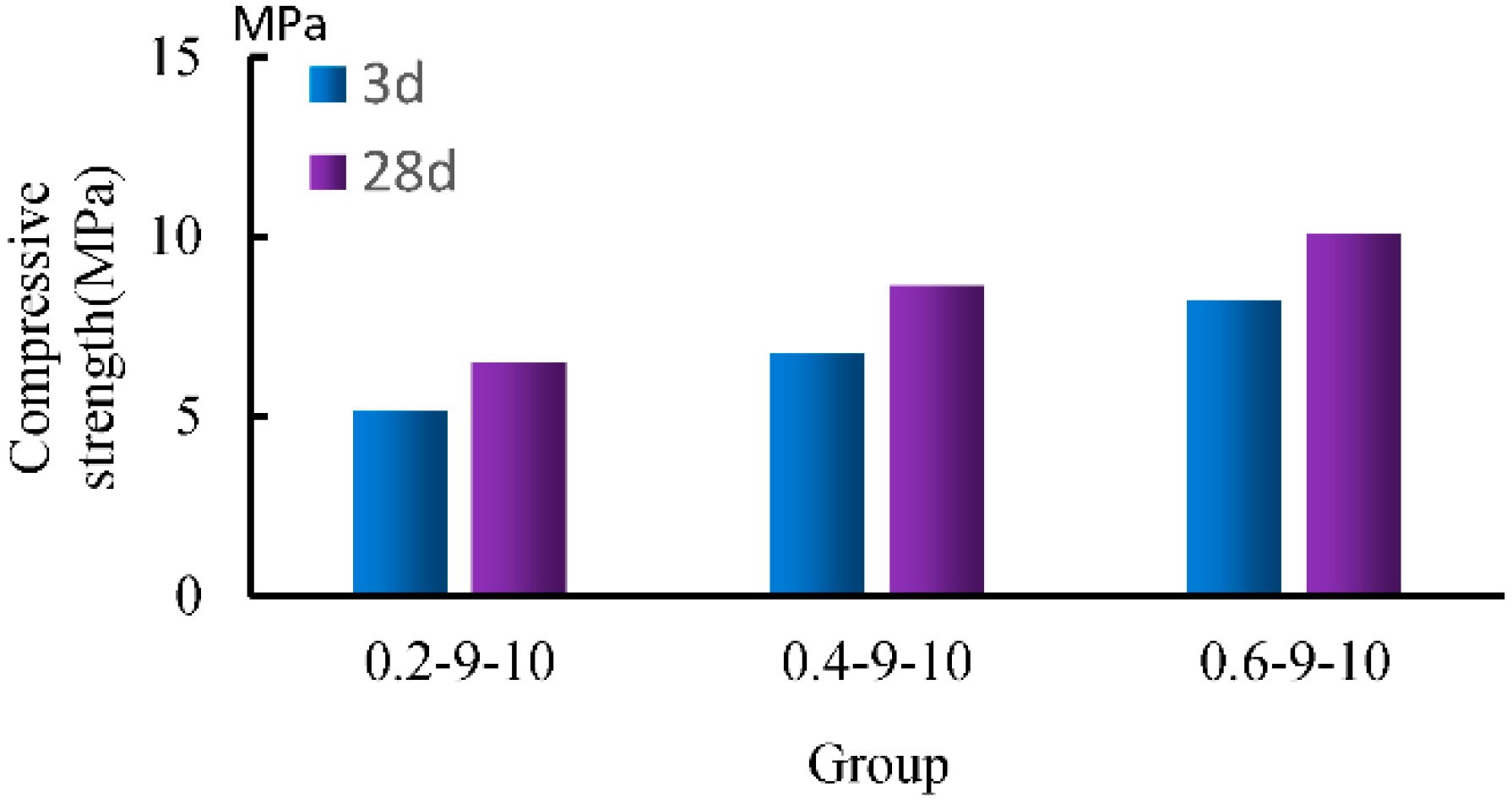
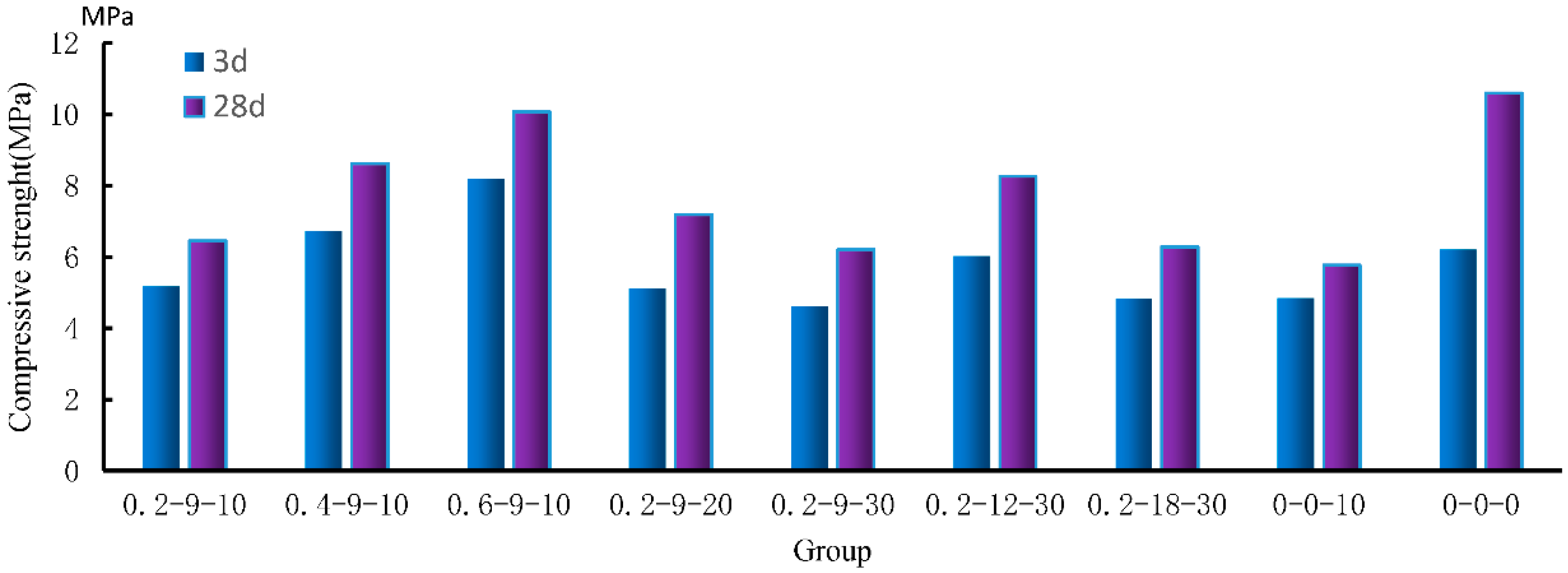
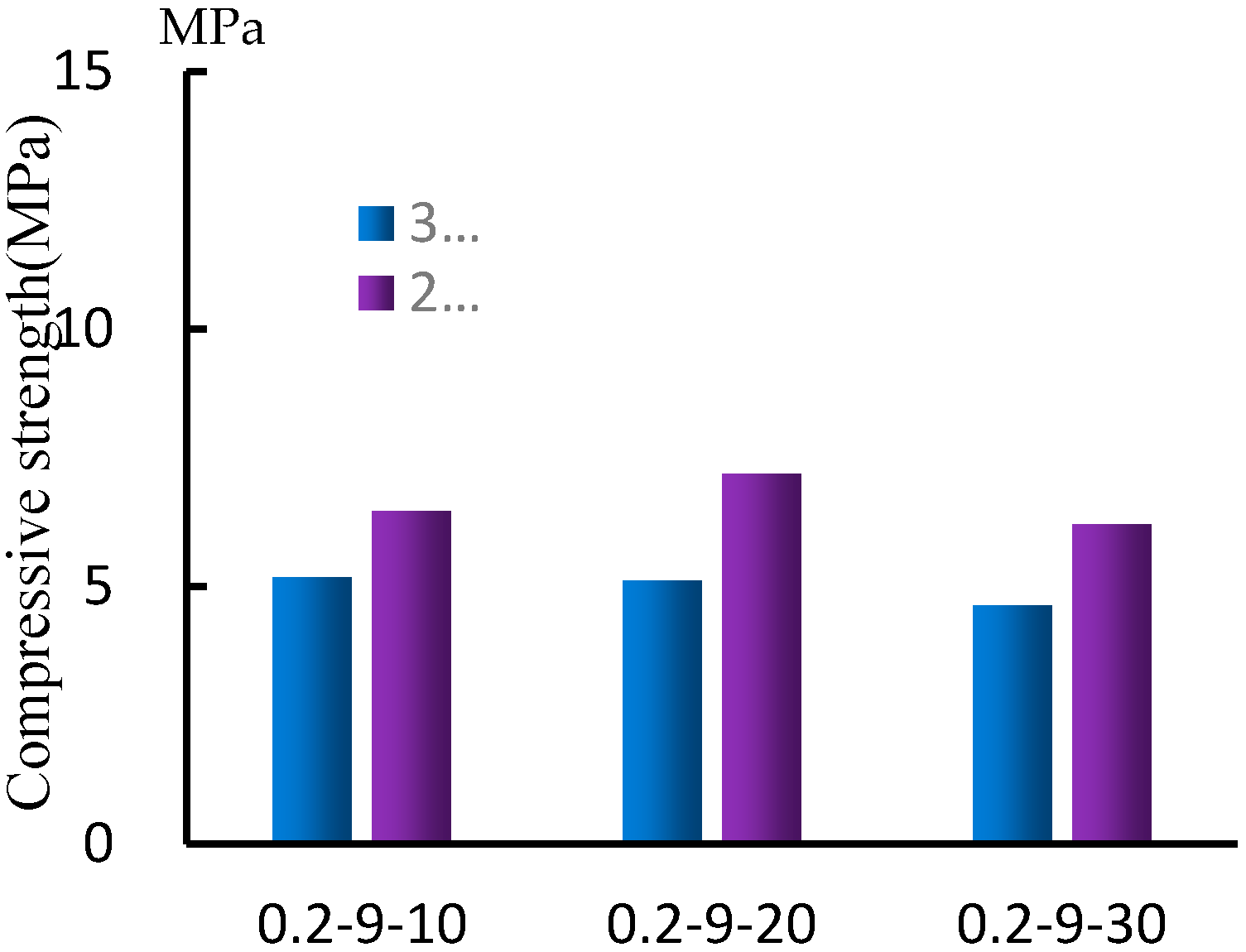
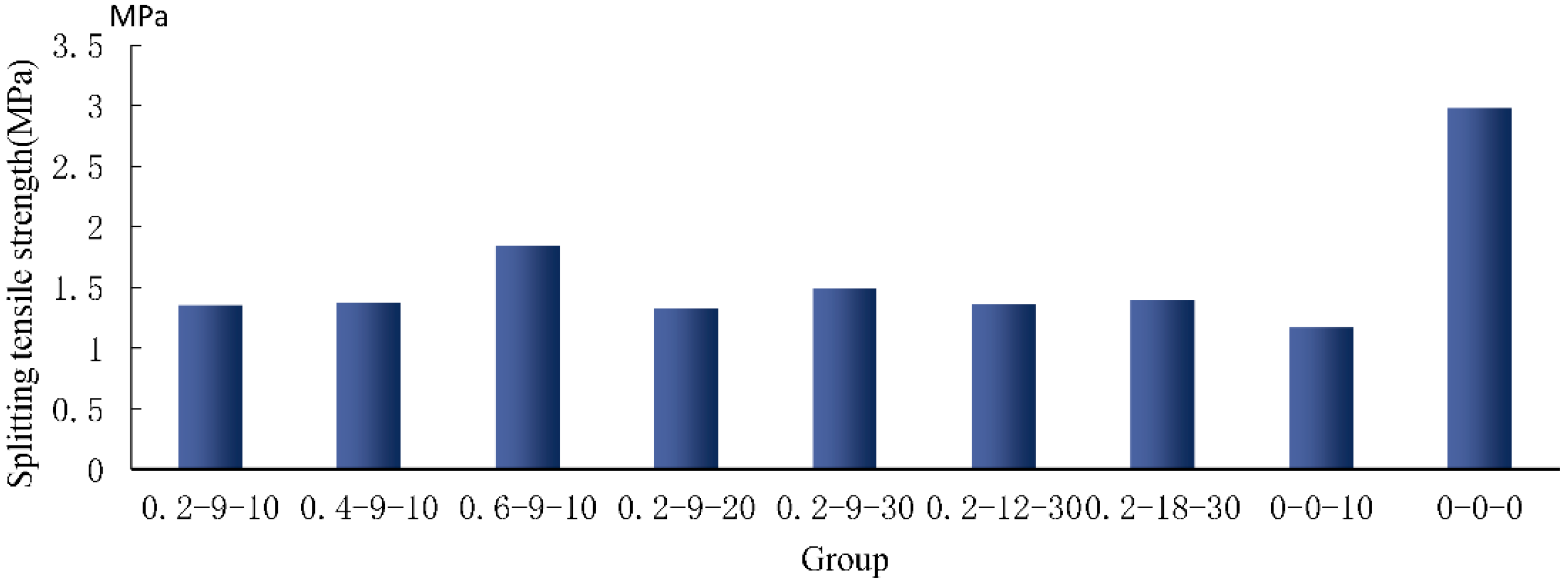
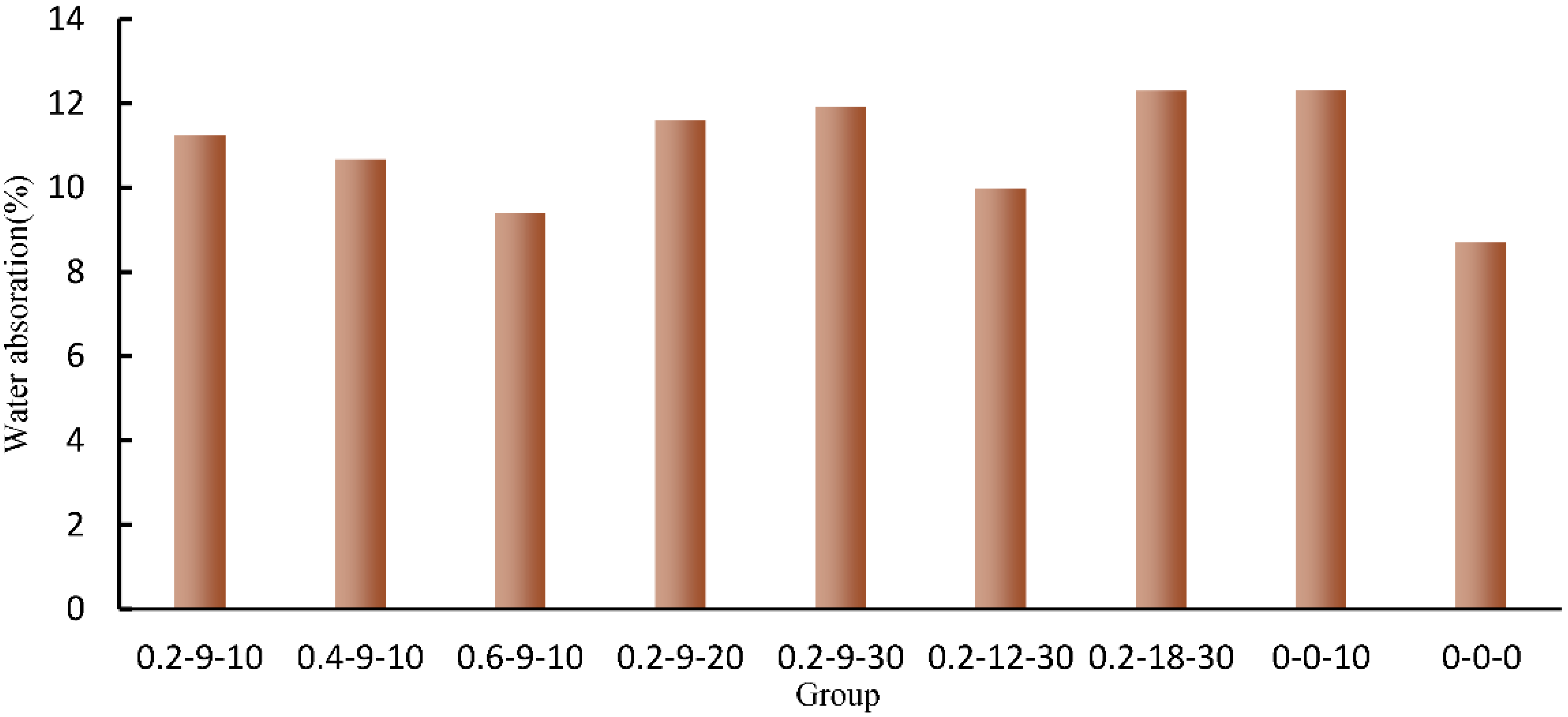
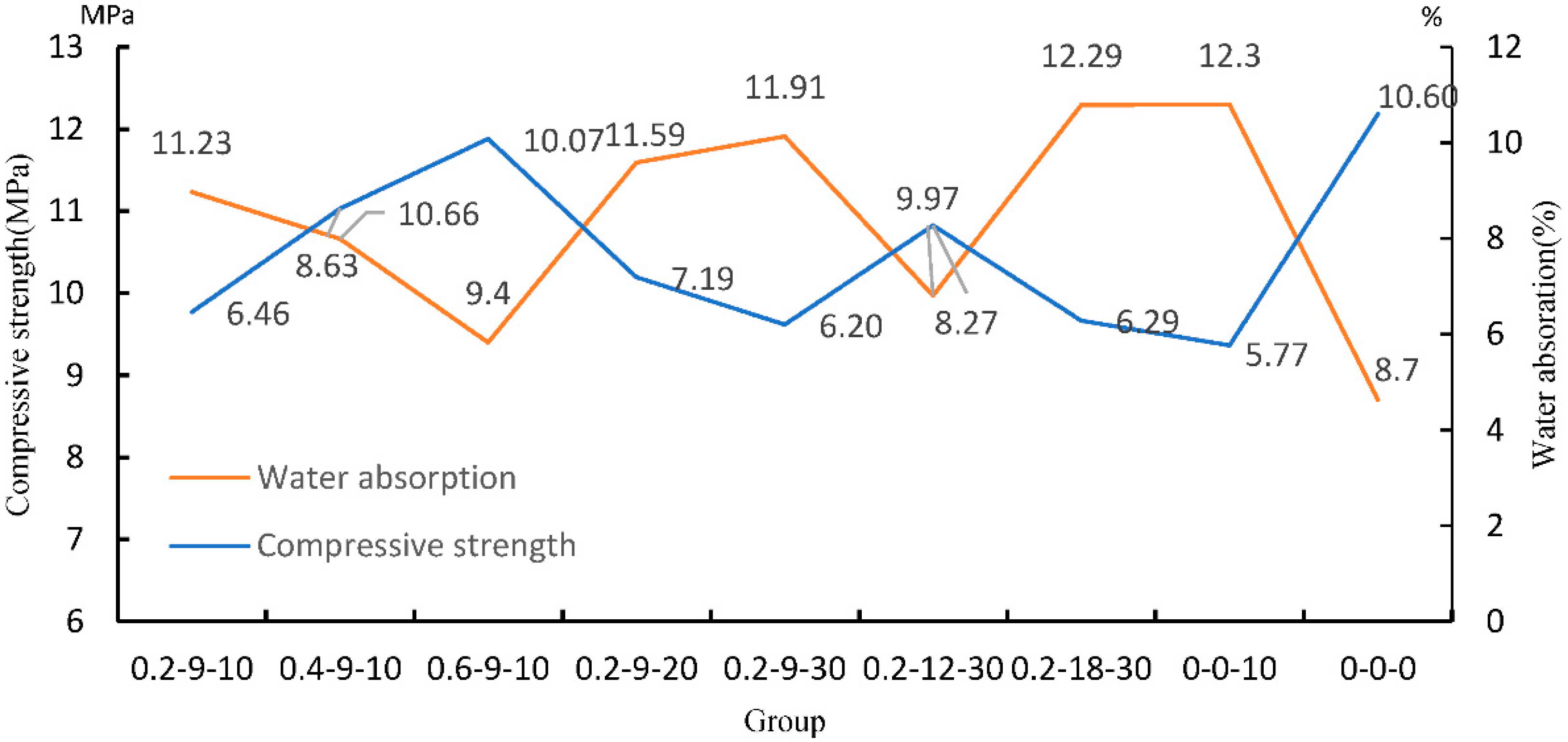
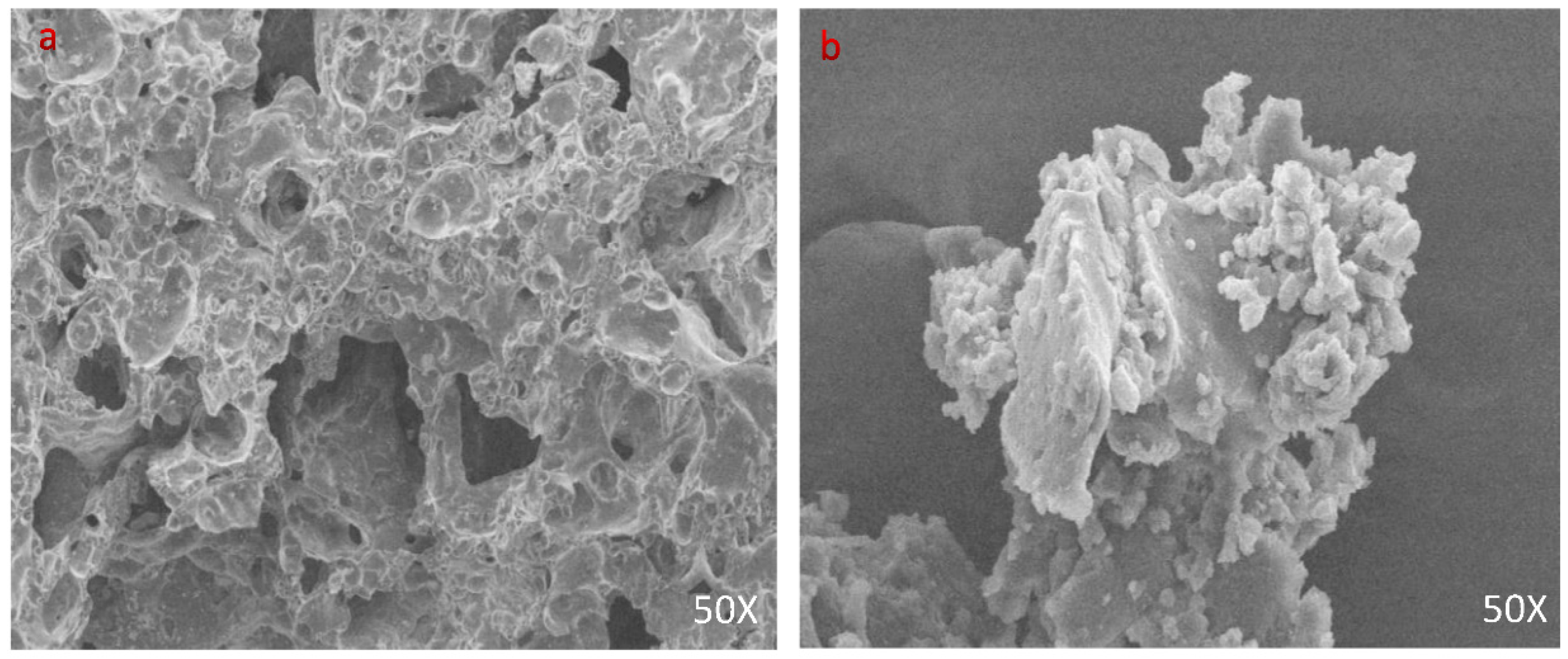
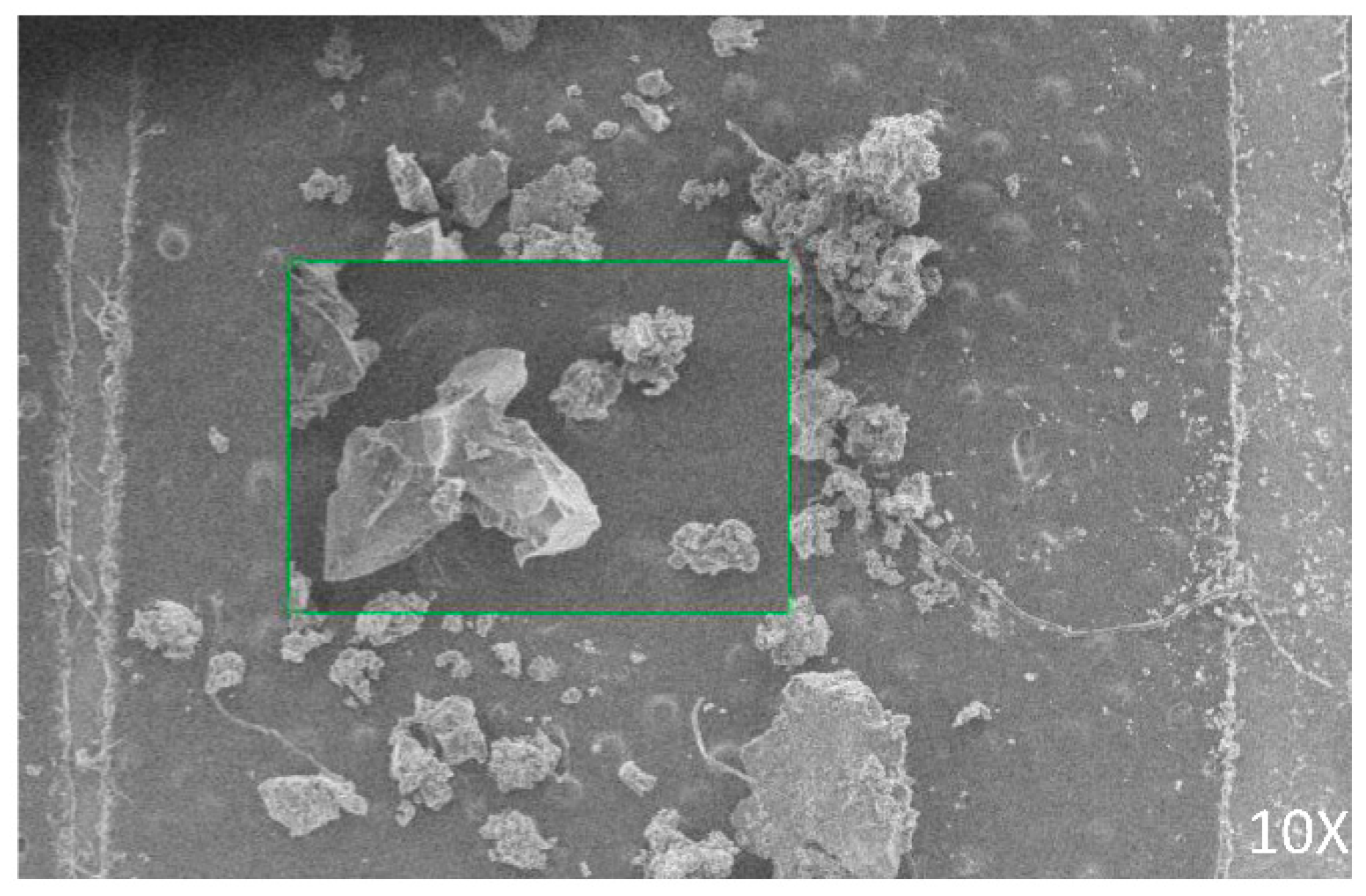

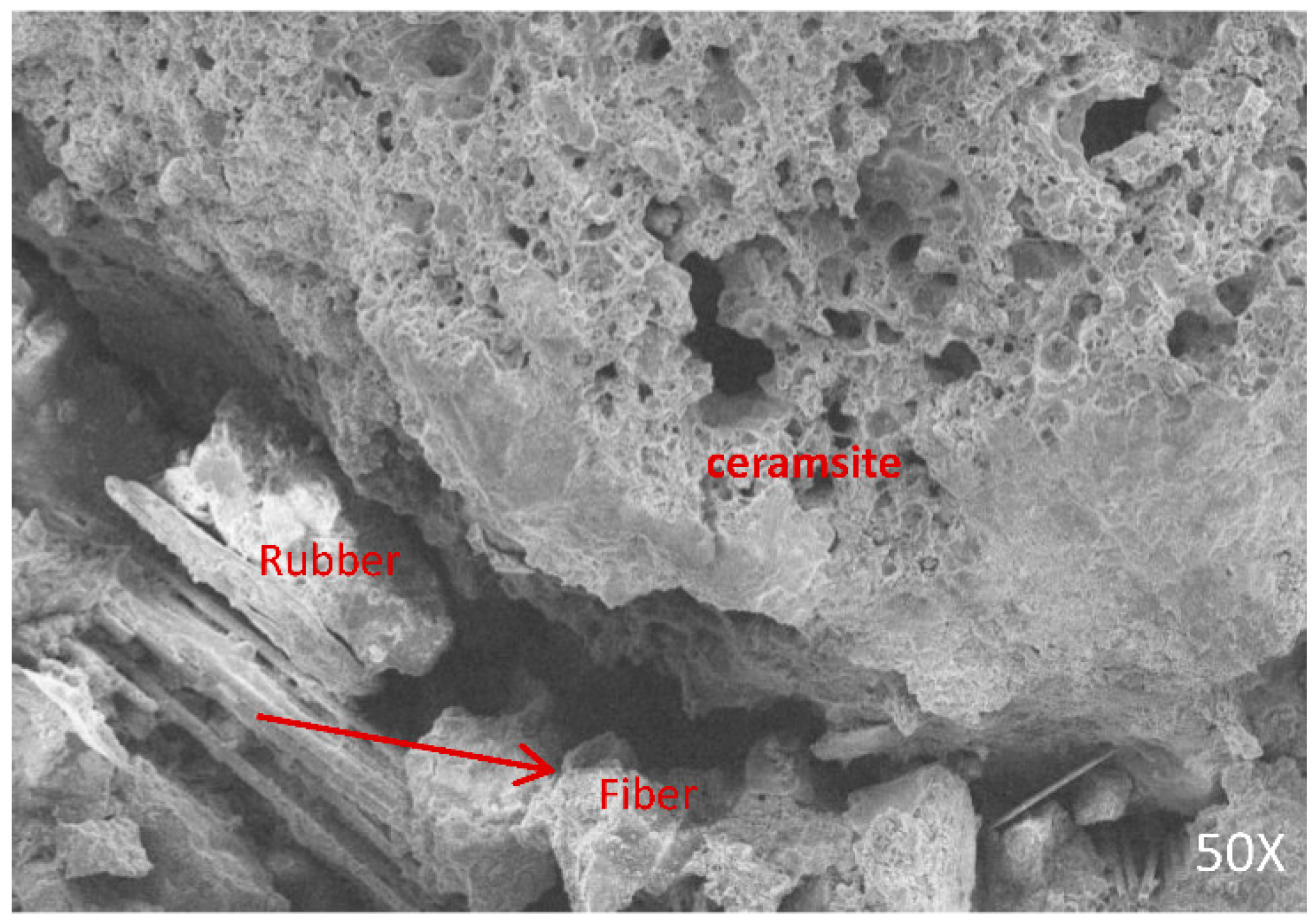

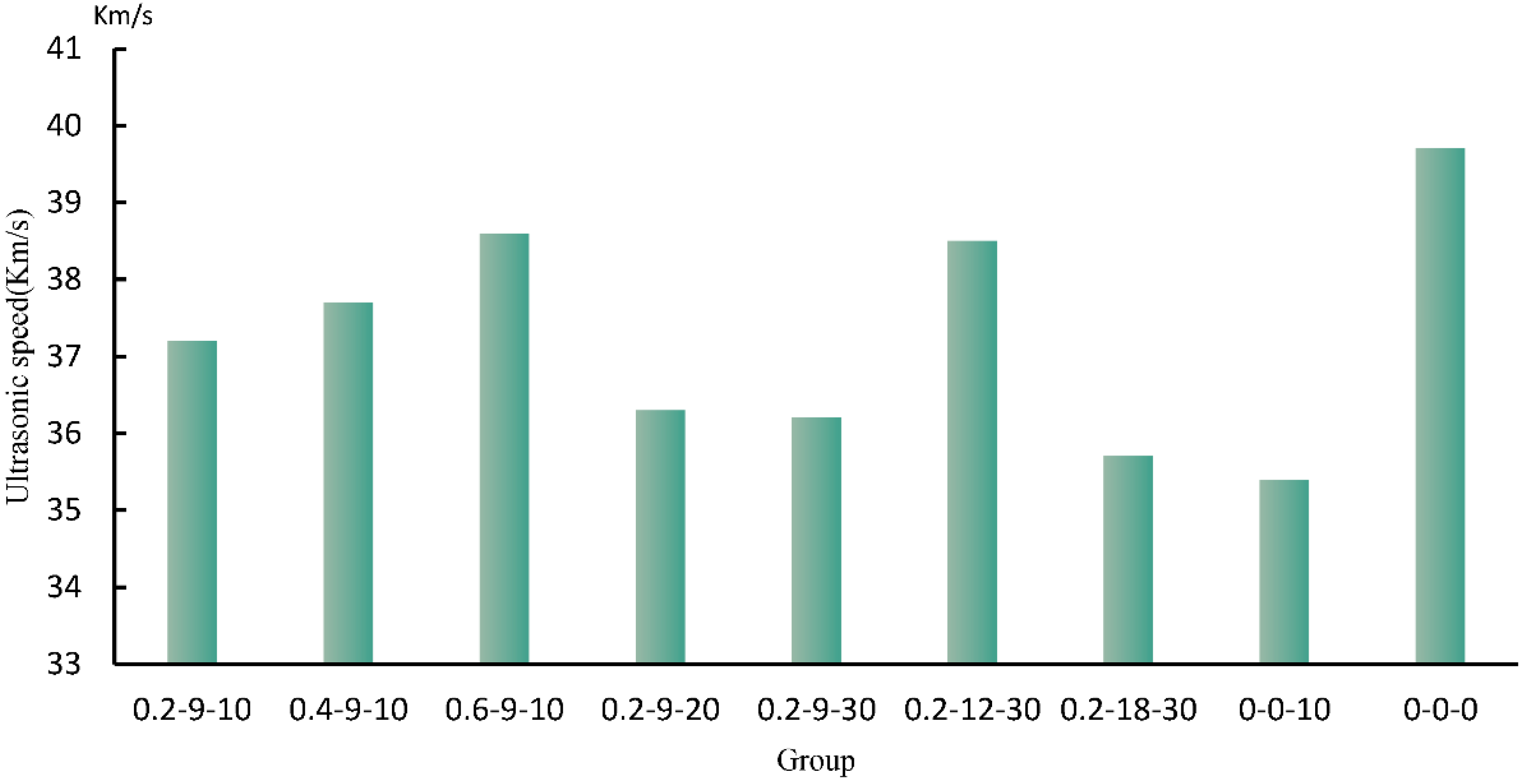
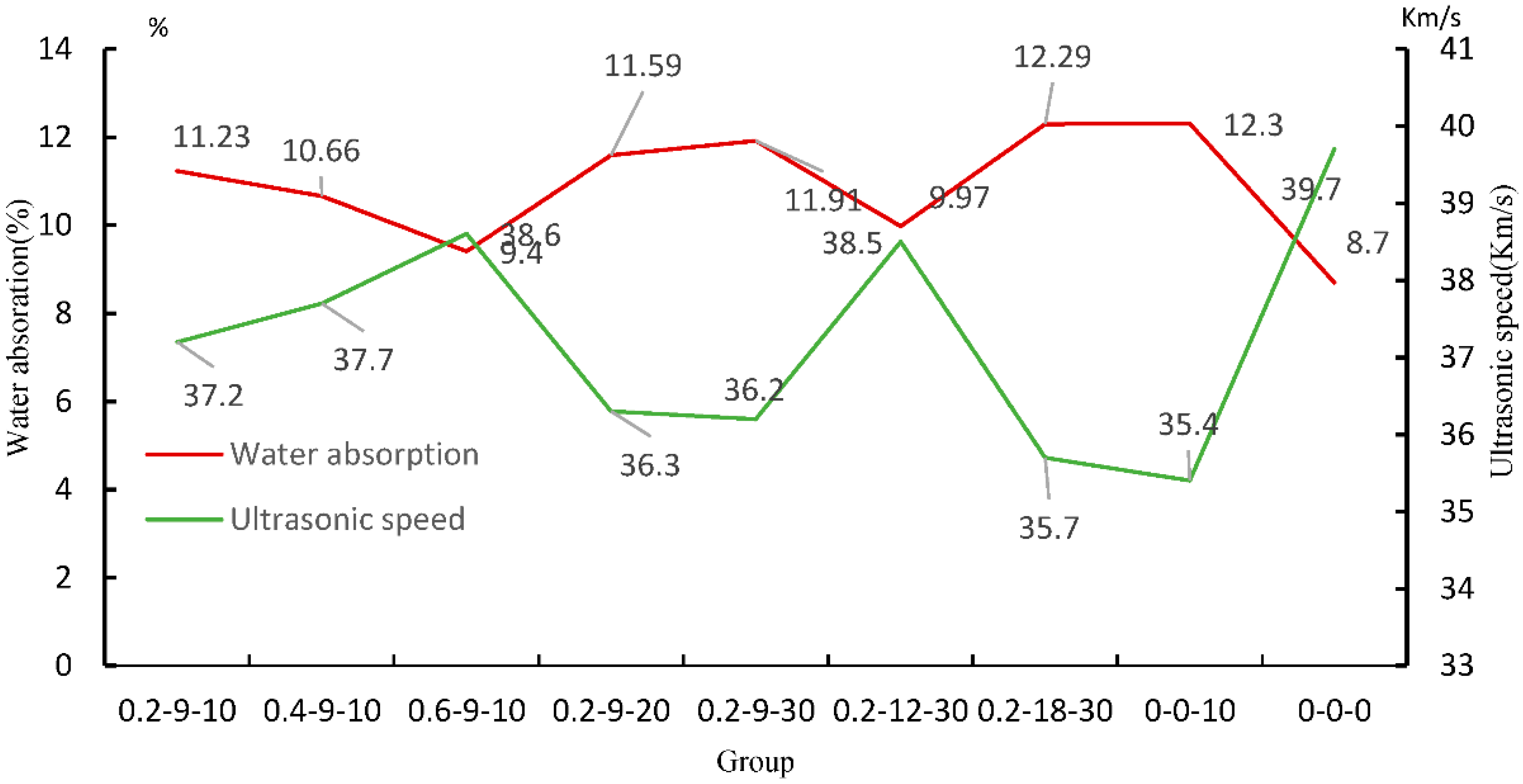
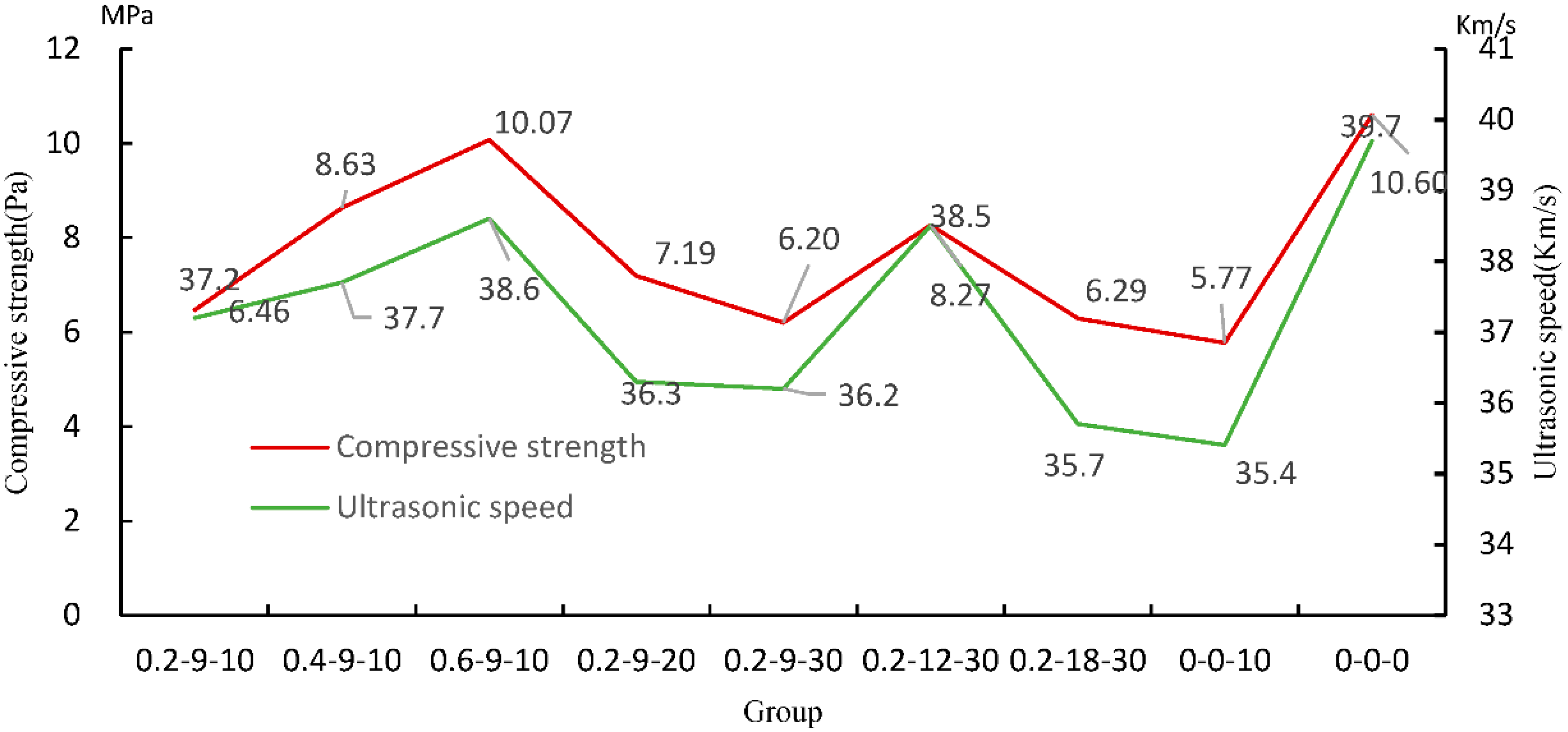
| Ceramsite | Particle Diameter | Density Grade | Bulk Density | Water Content | Apparent Density | Water Absorption |
| (mm) | (kg/m3) | (%) | (kg/m3) | (%) | ||
| 0–10 | 500 | 476 | 16.63 | 758.97 | 5.53 | |
| Rubber | Particle Diameter | Mean Grain Size | Bulk Density | Ash Content | Apparent Density | Water Absorption |
| (mm) | (mm) | (kg/m3) | (%) | (kg/m3) | (%) | |
| 1–3 | 1 | 1120 | 1< | 1052 | 3< | |
| Basalt Fiber | Operating Temp | Sintering Temperature | Linear Density | Elastic Modulus | Density | Tensile Strength |
| (°C) | (°C) | (μm) | (GPa) | (kg/m3) | (MPa) | |
| −269–650 | 1050 | 7–15 | 91–110 | 2630–2650 | 3000–4800 |
| Materials | Ceramsite | Cement | Water | Rubber | Fly Ash | Dosage | Length | |
|---|---|---|---|---|---|---|---|---|
| ID | ||||||||
| A-0.2-B-9-C-10 | 774.64 | 369 | 150 | 18.5 | 81 | 0.2% | 9 | |
| A-0.4-B-9-C-10 | 774.64 | 369 | 150 | 18.5 | 81 | 0.4% | 9 | |
| A-0.6-B-9-C-10 | 774.64 | 369 | 150 | 18.5 | 81 | 0.6% | 9 | |
| A-0.2-B-9-C-20 | 774.64 | 369 | 150 | 37.1 | 81 | 0.2% | 9 | |
| A-0.2-B-12-C-30 | 774.64 | 369 | 150 | 55.7 | 81 | 0.2% | 12 | |
| A-0.2-B-18-C-30 | 774.64 | 369 | 150 | 55.7 | 81 | 0.2% | 18 | |
| A-0.2-B-9-C-30 | 774.64 | 369 | 150 | 55.7 | 81 | 0.2% | 9 | |
| A-0-B-0-C-10 | 774.64 | 369 | 150 | 18.5 | 81 | 0 | 0 | |
| A-0-B-0-C-0 | 774.64 | 369 | 150 | 0 | 81 | 0 | 0 | |
Publisher’s Note: MDPI stays neutral with regard to jurisdictional claims in published maps and institutional affiliations. |
© 2022 by the authors. Licensee MDPI, Basel, Switzerland. This article is an open access article distributed under the terms and conditions of the Creative Commons Attribution (CC BY) license (https://creativecommons.org/licenses/by/4.0/).
Share and Cite
Bu, C.; Zhu, D.; Liu, L.; Lu, X.; Sun, Y.; Yan, Z.; Yu, L.; Wei, Q. A Study on the Mechanical Properties and Microcosmic Mechanism of Basalt Fiber Modified Rubber Ceramsite Concrete. Buildings 2022, 12, 103. https://doi.org/10.3390/buildings12020103
Bu C, Zhu D, Liu L, Lu X, Sun Y, Yan Z, Yu L, Wei Q. A Study on the Mechanical Properties and Microcosmic Mechanism of Basalt Fiber Modified Rubber Ceramsite Concrete. Buildings. 2022; 12(2):103. https://doi.org/10.3390/buildings12020103
Chicago/Turabian StyleBu, Changming, Dongxu Zhu, Lei Liu, Xinyu Lu, Yi Sun, Zhitao Yan, Linwen Yu, and Qike Wei. 2022. "A Study on the Mechanical Properties and Microcosmic Mechanism of Basalt Fiber Modified Rubber Ceramsite Concrete" Buildings 12, no. 2: 103. https://doi.org/10.3390/buildings12020103
APA StyleBu, C., Zhu, D., Liu, L., Lu, X., Sun, Y., Yan, Z., Yu, L., & Wei, Q. (2022). A Study on the Mechanical Properties and Microcosmic Mechanism of Basalt Fiber Modified Rubber Ceramsite Concrete. Buildings, 12(2), 103. https://doi.org/10.3390/buildings12020103







